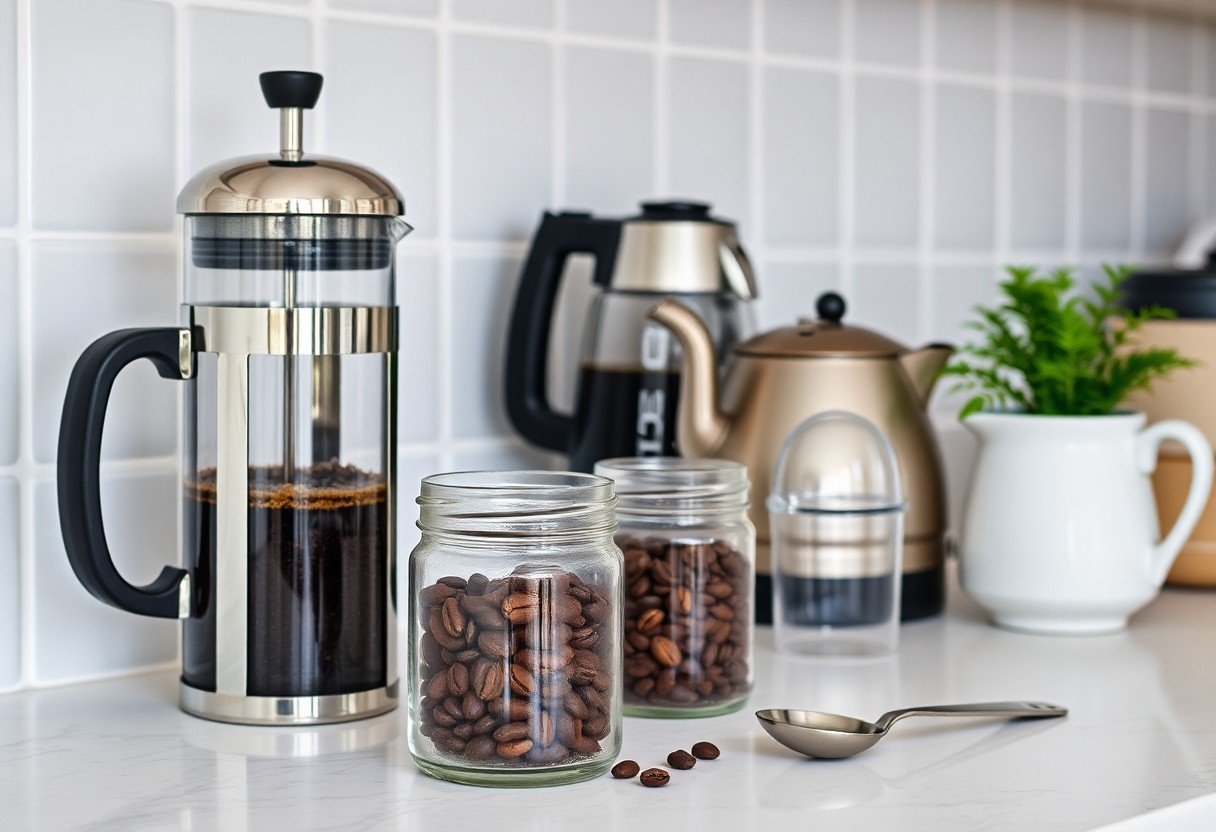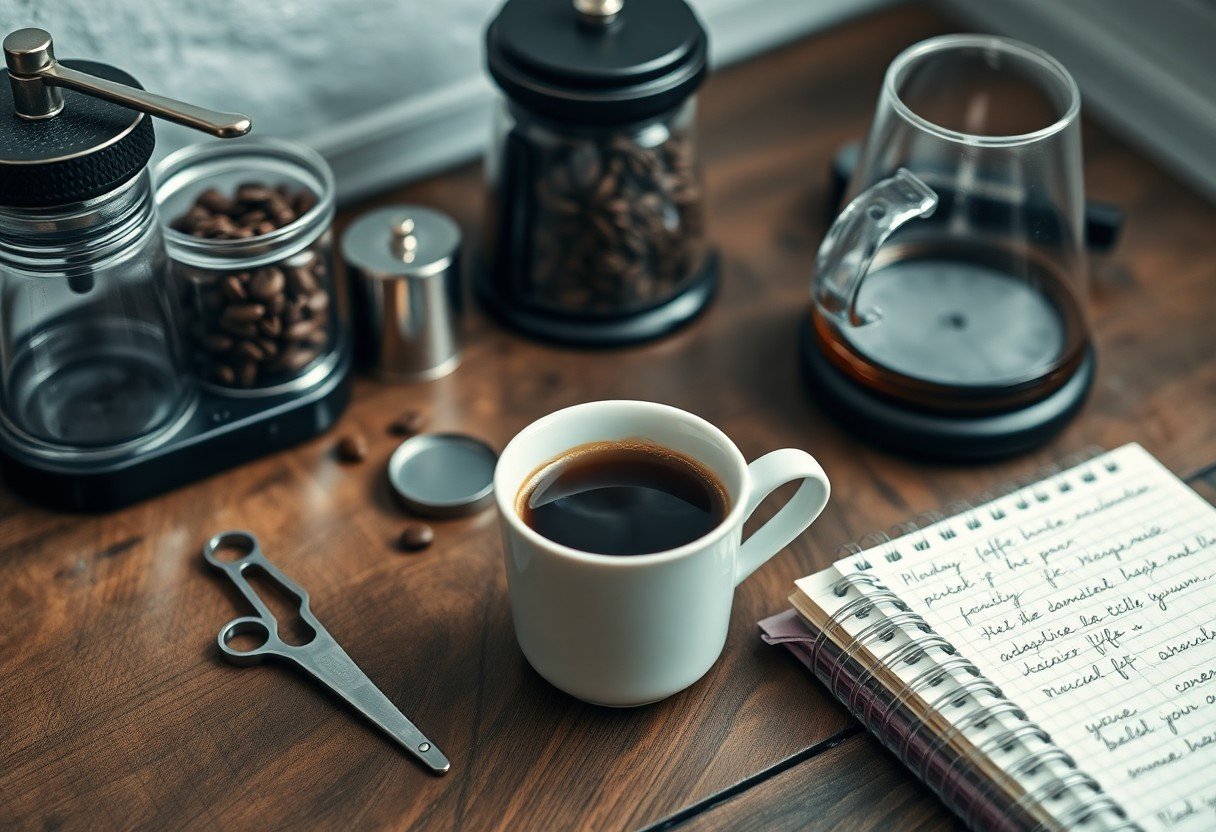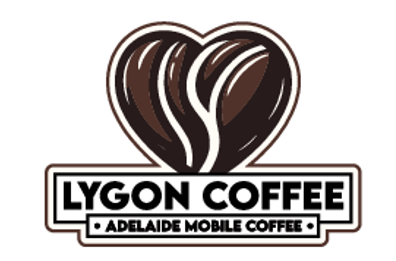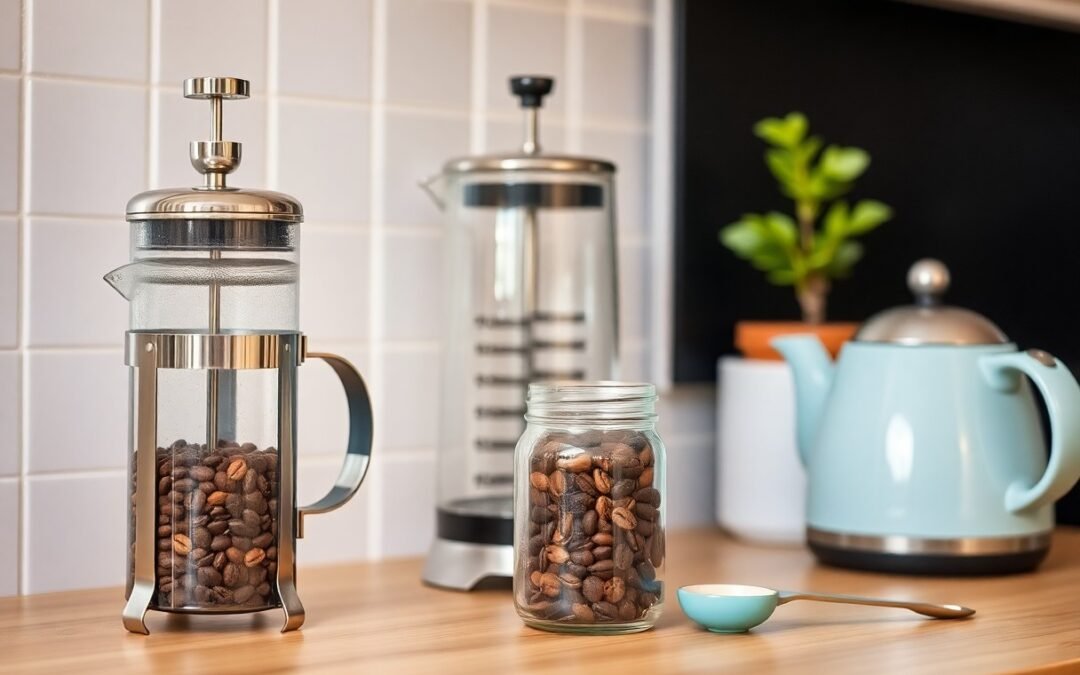The Art of Home Brewing: Setting the Stage
Creating Your Brewing Space
Begin by selecting a dedicated area in your kitchen or a cozy corner in your home that allows you to focus on the brewing process. Clear any clutter to promote a calm environment—a clean countertop can make a world of difference in your experience. Position all necessary tools within reach, including your kettle, scale, and brewing vessel. Consider ambient lighting and even background music to enhance your sensory experience while brewing, turning this process into a ritual rather than a chore.
Choosing Quality Ingredients
Your choice of beans directly impacts flavor, so prioritize quality. Source freshly roasted coffee, ideally within two weeks of roasting, and experiment with various origins and roast levels to uncover your preferences. Invest in a good grinder to achieve a consistent grind size tailored to your brewing method, as this will extract the best flavor. Stock up on filtered water as well; the mineral content significantly affects the taste of your brew.

Crafting the Perfect Brew: Key Ingredients
A flavorful cup of coffee hinges on a few key ingredients that can elevate your home brewing experience. Understanding the significance of quality coffee beans and water not only enhances your drink but also caters to your personal taste. Choosing the right varieties and ensuring optimal brewing conditions can make all the difference in flavor and richness.
The Essential Role of Coffee Beans
Water Quality: The Unsung Hero
Water quality directly impacts the coffee’s flavor, yet it often goes unnoticed. Using filtered or bottled water can enhance the extraction process, drawing out the coffee’s aromatic compounds while minimizing impurities that alter taste. Ideally, water with a balanced mineral content complements your brew, contributing to a clean and crisp cup.
On average, water makes up about 98% of your coffee, so its quality is paramount. Hard water can produce a chalky taste, while overly soft water lacks the minerals needed for full flavor extraction. Ideally, you want water that is neither too hard nor too soft, with a pH level close to neutral. Testing the water’s hardness can help you adjust accordingly, ensuring that each cup reflects the true essence of the beans and not an aftertaste of contaminants. Investing in a good water filtration system can yield significant improvements, transforming a decent cup into a delightful experience.
Mastering Brewing Techniques with Minimal Gear
Choosing Your Brewing Method Wisely
Selecting the right brewing method can significantly impact your coffee’s flavor profile. Explore options like the French press for a full-bodied experience, or pour-over for cleaner, nuanced tastes. Each method requires minimal gear but offers distinct results. If you have access to a small pour-over dripper, utilize it; otherwise, a simple French press or AeroPress can deliver sophisticated flavors without breaking the bank.
Precision Measurement: Timing and Ratios
Aiming for precision in brewing requires careful attention to timing and coffee-to-water ratio. A general guideline is to use a 1:15 ratio of coffee to water for optimal extraction, meaning you’ll need 20 grams of coffee for every 300 grams of water. Steeping times also matter; aim for a brew time of 4 minutes for a French press and 2-3 minutes for pour-over methods to achieve that perfect balance.
Adhering to these measurements not only enhances flavor but ensures consistency across brews. For instance, if you find your coffee too bitter, consider reducing the brew time or adjusting your ratio to 1:16 or 1:17 for a lighter cup. Conversely, if your coffee tastes weak, slightly increase the coffee amount or steeping time. Experimentation in small increments will help you identify the optimal balance suited to your palate, ultimately refining your home brewing skills.

Enhancing Flavor: Secrets to a Sophisticated Profile
Elevating your coffee’s flavor involves understanding the nuances that contribute to a sophisticated profile. By fine-tuning several key elements—such as grind size, water temperature, and brew time—you can unlock layers of taste that make each cup uniquely enjoyable. Exploring these variables lets you personalize your brew, highlighting the distinct characteristics of your chosen coffee beans.
The Impact of Grind Size on Taste
The grind size directly influences the extraction process, affecting flavor intensity and clarity. Finer grinds yield a more robust flavor due to faster extraction, while coarser grinds result in a cleaner, milder cup. Tailoring the grind size for your brewing method ensures optimal results, allowing the coffee’s natural qualities to shine through.
Temperature: Finding the Sweet Spot
Brewing temperature significantly impacts the extraction of flavors from your coffee grounds. A range between 195°F and 205°F (90°C to 96°C) often delivers the best results. Too hot can scorch the coffee, resulting in bitterness, while too cold can lead to sourness and under-extraction. Experimenting within this range can help you discover your perfect flavor profile.
Temperature Guidelines
| Temperature Range | Result |
| 190°F – 195°F | Under-extraction, sour flavors |
| 195°F – 205°F | Balanced, rich flavors |
| 205°F – 210°F | Over-extraction, bitterness prevails |
In pursuit of the ideal brew, experiment with temperature precision as slight adjustments can lead to significant changes in taste. For instance, using a thermometer to maintain a consistent brewing temperature allows you to refine your method: you might find that a 200°F temperature can enhance the chocolate notes in a medium roast, while a 203°F may bring out floral hints in a lighter roast. Keeping track of your adjustments can help achieve consistent, flavorful results over time.
Temperature Exploration
| Temperature Strategy | Flavor Development |
| Steep at lower end (195°F) | Delicate, bright acidity |
| Steep at midpoint (200°F) | Balanced sweetness and depth |
| Steep at higher end (205°F) | Full-bodied, complex profile |
Troubleshooting Your Brew: Common Pitfalls to Avoid
Even experienced brewers encounter challenges that can hinder the quality of their cup. Recognizing inconsistencies in flavor, aroma, and strength helps you pinpoint what went wrong. Addressing common pitfalls, like incorrect grind size or water temperature, can elevate your brew and ensure each cup reaches its full potential.
Recognizing Under and Over Extraction
Under-extraction leads to a sour, weak brew, often resulting from insufficient brewing time, too coarse a grind, or low water temperature. Conversely, over-extraction creates a bitter, astringent cup caused by excessive brewing time, too fine a grind, or overly hot water. Evaluating these elements is key to achieving balance in your coffee.
Adjustments for Disappointment
Making adjustments based on your tasting experience is vital for refining your brewing process. If your coffee tastes sour, consider grinding your beans finer or increasing the brew time. For bitterness, try a coarser grind or reduce the brewing duration. Note that even slight adjustments can dramatically change your cup.
You might find that altering the coffee-to-water ratio has a significant effect. For example, if your brew is consistently weak, try increasing the ratio to around 1:15 for a stronger flavor. Similarly, if you’re experiencing bitterness, reducing the ratio or brewing time can help. Keep detailed notes on each adjustment you make and the resulting flavors to create a personalized brewing approach that caters to your palate preferences.
Elevating Your Cup: Simple Additions for Enhanced Flavor
Enhancing your coffee experience can be as simple as adding a few thoughtful ingredients. Consider incorporating spices, flavored syrups, or even a dash of salt to bring out the coffee’s natural complexity. You can experiment with cinnamon, nutmeg, or vanilla to create a personalized flavor profile that resonates with your taste. Small adjustments can transform your daily cup into a gourmet experience without requiring extensive tools or techniques.
Experimenting with Spices and Flavors
Add a pinch of creativity to your cup by experimenting with spices such as cardamom, allspice, or cocoa powder. Each spice introduces unique notes that can complement or enhance the coffee’s inherent flavors. For a warming effect, try a sprinkle of cinnamon, or for something bold, add a hint of chili powder. The key is balance—start with a small amount and adjust to your preference to discover your ideal blend.
The Power of Milk Alternatives
Choosing the right milk alternative can elevate the creaminess and richness of your coffee. Options like almond, oat, and coconut milk not only change the flavor but also cater to different dietary needs. Oat milk, for example, offers a velvety texture that mimics dairy, making it a perfect addition for foam or lattes. Explore unsweetened or flavored varieties to find the best match for your brew, allowing enhanced taste without overwhelming the coffee’s essence.
Conclusion
On the whole, brewing a flavorful, sophisticated cup at home with minimal tools is achievable with attention to detail and technique. By selecting quality ingredients, mastering the brewing process, and experimenting with parameters like water temperature and brew time, you can elevate your daily coffee experience. Utilize simple methods and tools effectively to unlock a world of rich flavors, ensuring each cup reflects your personal taste. With practice and a willingness to refine your approach, your home coffee brewing can rival that of any café.
FAQ
Q: What type of coffee beans should I use for a sophisticated cup?
A: Opt for fresh, high-quality coffee beans, preferably single-origin or specialty roasts. Aim for a medium to dark roast for a rich flavor profile, and consider experimenting with different varieties to find your preferred taste.
Q: How can I grind my coffee beans without an expensive grinder?
A: If you don’t have a grinder, use a mortar and pestle, a blender, or a food processor. Aim for a consistent medium-coarse grind to balance extraction and flavor. Only grind as much as you need to maintain freshness.
Q: What brewing method can I use with minimal tools?
A: A pour-over method is ideal for simplicity. You can use a filter cone or even a makeshift filter with a slow-pour technique. This method allows for greater control over brewing time and water temperature, enhancing the flavor.
Q: How does water temperature affect the brewing process?
A: The ideal water temperature is between 195°F to 205°F (90°C to 96°C). Water that is too hot can extract bitterness, while water that is too cool can lead to under-extraction. Use a thermometer or let boiling water sit for 30 seconds to reach optimal temperature.
Q: How should I store my coffee beans to maintain flavor?
A: Store your coffee beans in an airtight container, away from light, heat, and moisture. A cool, dark place is best. Avoid refrigerating coffee, as this can introduce moisture and affect flavor.

